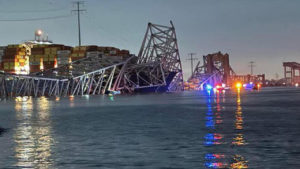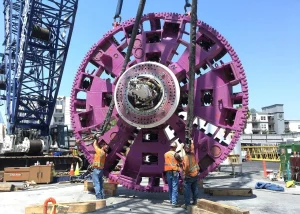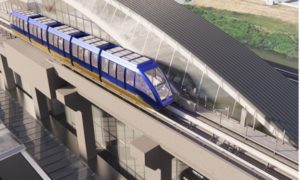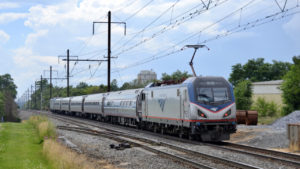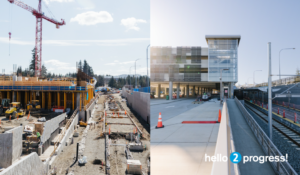Watch: Finch West LRT update – Multi-use tunnel construction now underway at Highway 400
Written by Alex Iantorno, Metrolinx Corporate Communications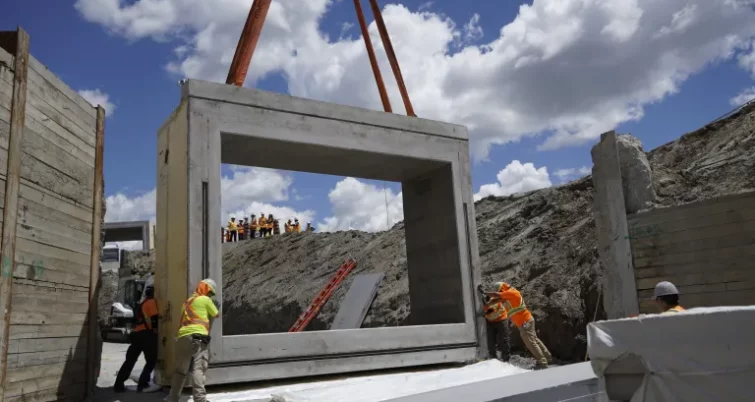
While crews continue to build a new transit line along Finch West Avenue in Toronto, the team is also making improvements for pedestrians and cyclists. A new tunnel near the Highway 400 on-ramp will make it safer and easier for people to get around.
Building community connections is a key objective of the Finch West light rail transit (LRT) project.
The new light rail line itself is an obvious example. But alongside Finch Avenue West, Metrolinx is also building safe and accessible pedestrian pathways that provide better interconnectivity for everyone.
Last month, the Finch West LRT team took a major step forward on one of these new pathways when they installed 18 concrete tunnel segments. Located under the Highway 400 southbound on-ramp at Finch Avenue West, these segments will form the body of a new multi-use tunnel.
The tunnel will provide a better way for pedestrians and cyclists to move through the area, instead of travelling beside high-speed traffic at the surface on-ramp.
Using the tunnel, pedestrians and cyclists can go under the Highway 400 southbound on-ramp.
While the tunnel itself is only 32 metres long, the entire portal length will be 155 metres in length when accounting for the tunnel’s access points.
A new intersection with traffic lights was not feasible at this location, but designers saw that there was enough space to accommodate a tunnel and make a significant safety improvement for pedestrians.
Work began with the on-ramp closure, followed by excavation and placement of 18 precast concrete sections to create the tunnel. Each section weighs 39,525 kg – that’s more than 3 school buses.
The precast tunnel has rigid foam on the top, bottom and sides, providing thermal protection and noise insulation. Workers also installed a vapour barrier under each concrete section, providing additional protection from groundwater leakage.
The team conducted all work to install the precast sections over a single weekend in June, and completed this 18 hours ahead of schedule. This allowed the on-ramp to reopen well ahead of the morning rush hour.
Although the structure is complete, there’s more work to go before pedestrians and cyclists can begin using the tunnel.
Next steps include constructing the portals that will transition from the surface to the tunnel and installing a drainage system to help mitigate any water buildup or flooding issues. The drainage system is state-of-the-art and includes an alarm system that notifies maintenance crews immediately in the event of unexpected water buildup.
Construction is scheduled to be complete this year, and the tunnel will open to the public after inspections and certifications.
Read more articles about passenger rail.
For brief news updates and commentary, please follow me on Twitter @davidclesterRTS

